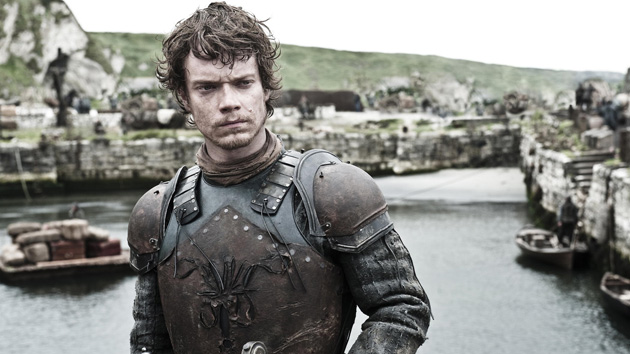HBO’s All-Digital Workflow Captures ARRI Alexa Footage with Codex Technology
Like the impending arrival of winter in the fictional land of Westeros, a new season of HBO’s hit series Game of Thrones is on the horizon. The show’s first season recorded ARRI Alexa footage to tape, but HBO went completely tapeless for the second season, using recording systems and near-set digital-lab technology from Codex Digital to make the most of the images captured by the Alexa. Our friends at Codex Digital filled us in on the details of the process.
Above: Alfie Allen as Theon Greyjoy in Game of Thrones/photo by Helen Sloan
Game of Thrones, HBO’s epic fantasy series, recently wrapped its second season, which was shot in Northern Ireland, Croatia and Iceland. Based on a series of best-selling novels by George R.R. Martin and executive-produced for HBO by David Benioff and D.B. Weiss, the show, about a fictional land called Westeros beset by warring clans, earned 13 Emmy nominations for its first season and was named Outstanding New Program at the 27th annual Television Critics Association Awards.
For its second season, Game of Thrones implemented a fully file-based workflow. Designed by HBO Technology Architect Steve Beres in conjunction with Greg Spence, the show’s co-producer, and Jonathan Brytus, an associate producer, the workflow included ARRI’s Alexa camera and Codex’s recorder and digital lab technology. The Alexa was also used for the show’s first season, but the camera’s 4:4:4 output was captured to HDCAM-SR tape and followed a conventional tape-based workflow through editorial, visual effects, color-correction and final assembly.
This season, camera data was captured by Codex Onboard Recorders and Datapacks. Full Datapacks were sent to a dailies colorist (located near set) who applied a dailies color-timing pass using another Codex Onboard Recorder and FilmLight’s Truelight On-Set. The Datapacks were then passed on to the dailies team, which employed a Codex Digital Lab to prepare deliverables for editorial, visual effects and review purposes, and a second Codex Digital Lab to archive to LTO tape. The Datapacks were then returned to production and the sequence began again. HBO employed a similar workflow in the production of two films, Hemingway & Gellhorn and Game Change.
Emilia Clarke as Danereys Targaryen in Game of Thrones/photo by Helen Sloan
Game of Thrones’ new workflow allowed the production to process its own dailies. The show was shot primarily in Northern Ireland, far removed from the type of post-production infrastructure a show of this scale typically requires. If the production lacked its own resources for dailies processing, production media would have to be sent to London or other remote location for processing. For the second season, the series also shot in Croatia and Iceland, both similarly remote locations, and there, too, the Codex Digital Lab helped the production to stay on schedule for dailies and editorial.
The new workflow technology also provided an efficient way of managing color-correction information throughout the production and post-production processes. Color decisions made on the set by the cinematographer or by the dailies colorist were retained and associated with specific camera files, but they are not “baked in.” The final colorist and others involved in the post chain enjoyed the advantages of working with ungraded source media while also having immediate access to color decisions made during production.
This system can retain more than just color decisions. Virtually any kind of data that a production deems useful can be entered into the system, associated with individual files, and retrieved at later stages of production and post.
The new workflow simplified many aspects of final post work. Traditionally, original camera media was recorded to SR tapes that were sent to a post house for online editorial. With the new workflow, the show’s editorial team could perform many of the tasks required for online editorial themselves and simply submit a stack of files, organized in show order for routine assembly.
Ultimately, the new workflow netted significant time and cost savings to the production without compromising production quality. It facilitated the capture of rich, high-quality imagery, while eliminating the burdens and costs of film and film processing, along with the physical limitations of film.
Crafts: Shooting
Sections: Technology
Topics: Project/Case study Codex Digital fix game of thrones HBO tapeless workflow tv programming
Did you enjoy this article? Sign up to receive the StudioDaily Fix eletter containing the latest stories, including news, videos, interviews, reviews and more.











I don’t understand a single word of that article…..but it sure sounded cool.
Brilliant insight into a large productions contemporary digital workflow, thanks a lot!